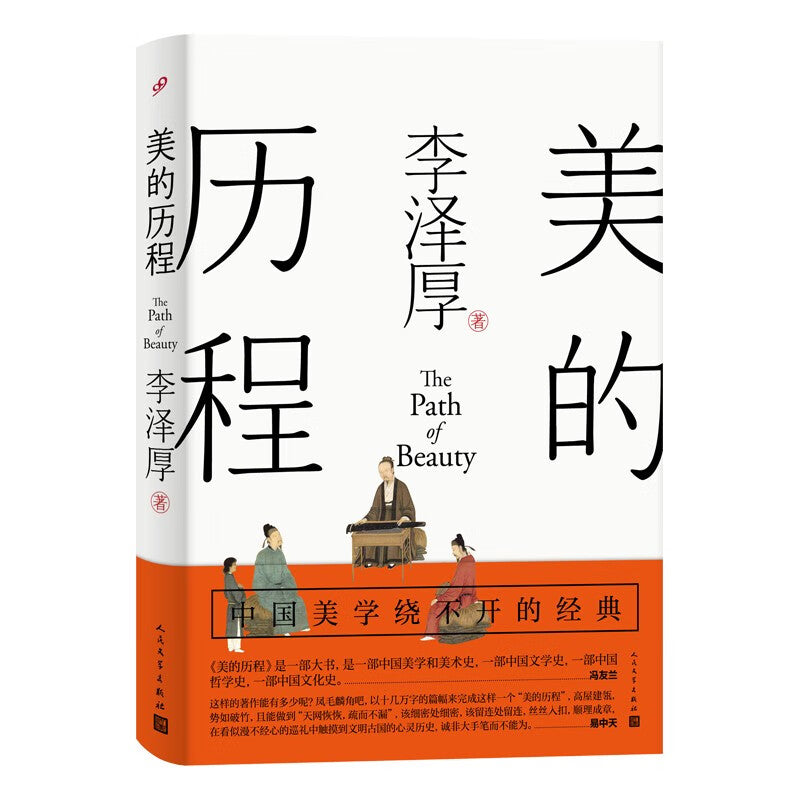WULOLIFE
《美的历程》作者: 李泽厚 出版社: 人民文学出版社
《美的历程》作者: 李泽厚 出版社: 人民文学出版社
Couldn't load pickup availability
Description
内容简介 · · · · · ·
本书是中国美学的经典之作。凝聚了作者李泽厚先生多年研究,他把中国人古往今来对美的感觉玲珑剔透地展现今配以精美的插图。
《美的历程》是部大书(应该说是几部大书),是一部中国美学一部中国文学史,一部中国文化史。 ——冯友兰
以十几万字的篇幅来完成这样一个”美的历程”,高屋建瓴,势如破竹,且能做到“天网恢恢,疏而不漏”,该细密处细密,该留连处留连,丝丝入扣,顺理成章,在看似漫不经心的巡礼中触摸到文明古国的心灵历史,诚非大手笔而不能为。
《美的历程》一书真是写得英姿勃发。才气逼人。单是标题,便气度不凡:龙飞凤舞。青铜饕餮。魏晋风度、盛唐之音,更不用说每过几页就有一段华彩乐章了。实际上,《美的历程》是可以当作艺术品来看待的。它充分地表现着李泽厚的艺术魁力。 ——易中天
作者简介 · · · · · ·
李泽厚,当代著名哲学家、美学家和思想学家,湖南长沙人,生于1930年6 1954 、美国科罗拉多学院荣誉人文学博士。李泽厚的《美的历程》、《中国近代思想史论》等著作影响极大,从者甚众,人称“青年导师”。 90年代,李泽厚客居美国,出版了《论语今读》、《世纪新梦》、《己卯五说》等著作,人文关怀。他提出的“主体性实践哲学”、“心理积淀说”、“情本体”、“偶然性(命运)”、“后马克思主义”、“儒学四期说”等观点对中国近几十年的社会文化和思想产生了很大影响。 2010标准严格著称的《诺顿理论和批评选集》(第二版)、亚里士多德、休谟、康德、莱辛、黑格尔等大哲学家的代李的非西方哲学家。
目录 · · · · · ·
二 青铜饕餮一 狞厉的美二 线的艺术三 解体和解放三 先秦理性精神一 儒道互补二赋比兴原则三 建筑艺术四 楚汉浪漫主义一 屈骚传统二 琳琅满目的世界三 气势与古拙五魏晋风度一 人的主题二 文的自觉三 阮籍与陶潜六 佛陀世容一 悲惨世界二 虚幻颂歌三 走向世俗七盛唐之音一 青春、李白二 音乐性的美三 杜诗颜字韩文八 韵外之致一 中唐文艺二内在矛盾三 苏轼的意义九 宋元山水意境一 缘起二 “无我之境”
三细节忠实和诗意追求四 “有我之境”
十 明清文艺思潮一 市民文艺二 浪漫洪流三 从感伤文学到《红楼梦》
四绘画与工艺结语
